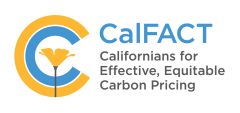| Key Features | Cap and Dividend SB775 | Cap and Trade AB398 |
| Offsets | Offsets eliminated completely. | • Offsets allowed.
• Offset limit reduced from 8% to 4% per covered entity until 2025, and 6% after that. • Half of offsets must provide in-state benefits. |
| Allowances | No free allowances | • Free allowances for industry (primarily oil) continue at current levels, set to decline at same rate as cap.
• CARB has no power to adjust free allowances until 2025. • Value of giveaway is $10-30B over the life of the program. |
| Price Collar | • The price floor starts at $20 per ton of CO2 emissions in 2021.
• From 2023 the floor price increases by $5/ton PA capping at $60/ton in 2030. • The ceiling starts at $30/ton, rising by $10/ton PA capping at $120/ton in 2030 |
• Delegates authority for setting price floor, price ceiling, and “speed bumps” to CARB.
• Two price containment reserve points for covered entities to secure additional non-tradable allowances at lower price. |
| Protecting vulnerable California businesses and preventing “leakage” | Border Adjustment Provisions
(if upheld in legal challenge, otherwise free allowances will operate). |
• Continues current free allowances for trade-exposed industries.
• CARB to consider border adjustments in recommendation report in 2025. |
| Where revenue goes | Three funds:
1) Dividend to California residents (majority of funds) 2) Fixed annual fund for CA Clean Climate Infrastructure Fund 3) Fixed annual fund for CA Climate and Clean Energy Research Fund |
• Suspends Fire Prevention Fee and directs revenue from C&T to cover lost revenue.
• Subsidizes massive new tax break for the power sector exempting them from state sales and use tax. • Remaining funds (if any) go to Greenhouse Gas Reduction Fund which support projects identified in CARB scoping plan linked to reduction of GHG emissions. By removing funding from GGRF, this undermines the main purpose of program which is emissions reductions. |
| Current Banked Allowances | Not carried forward | • Surplus allowances carried forward.
• CARB is directed to “Evaluate and address concerns related to over allocation”. (Effect: Likely keep the price at or near the floor, which will mean more local and GHG pollution.) |
| CARB & Local Air District Regulatory Authority | Unchanged. Air Districts can regulate GHG emissions locally. | • Air Districts forbidden from regulating GHG emissions from facilities covered by cap and trade.
• CARB can only regulate oil industry via cap and trade. |
| Protection for low- and middle-income households from price increases | Dividend will support low- and middle-income households and make this a “progressive” tax | • No protection.
• Tax will be regressive as low-income households see price increases as a greater percentage of income. |
Skip to content
